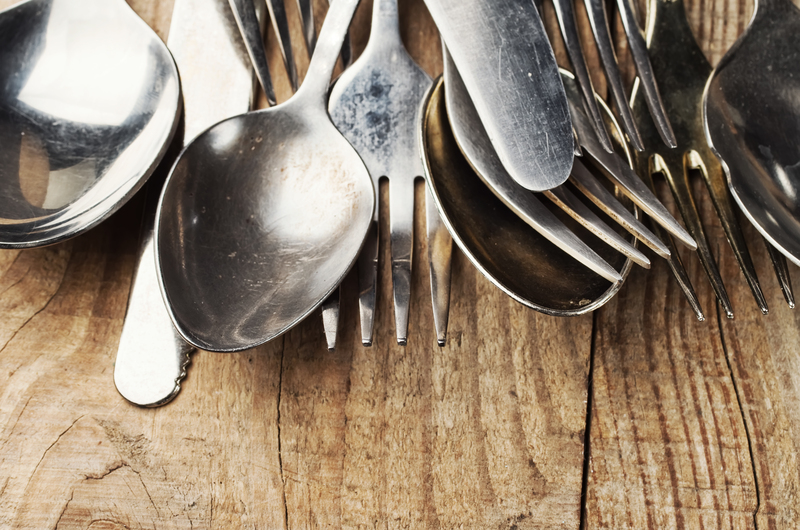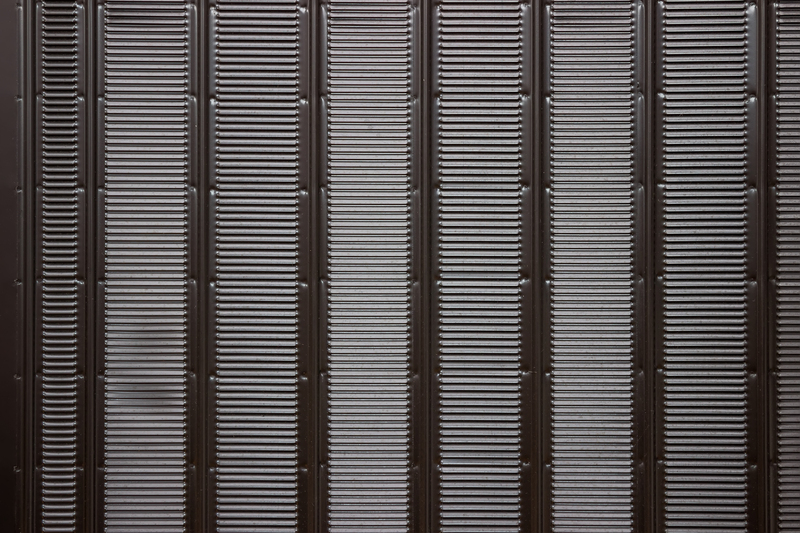Kick Grease to the Curb: Efficient Methods for Pristine Enamel Oven Trays
Posted on 17/09/2025
Kick Grease to the Curb: Efficient Methods for Pristine Enamel Oven Trays
Are you tired of stubborn baked-on grease on your enamel oven trays? Restoring your trays to their original shine isn't just about aesthetics--it's about hygiene, food flavor, and appliance longevity. This comprehensive guide dives deep into efficient cleaning methods for enamel oven trays, covering tips, tricks, and expert advice to help you kick grease to the curb and maintain sparkling clean pans with minimal hassle.
Why Cleaning Enamel Oven Trays Matters
Regular maintenance of your enamel oven trays not only preserves their appearance but also improves the longevity of your bakeware. Grease buildup can affect cooking results, alter food flavors, and even harbor bacteria. Before delving into efficient cleaning techniques, let's explore the advantages of keeping your trays in top condition:
- Better-tasting meals: Old residue affects flavor and can result in smoky, unpleasant smells.
- Improved hygiene: Regular cleaning helps prevent bacterial growth and mold.
- Prolongs tray lifespan: Prevents corrosion and enamel wear.
- Prevents smoke and oven fires: Built-up grease can ignite at high temperatures.

Understanding Your Enamel Oven Tray
Enamel-coated oven trays are prized for their durability, stain-resistance, and easy-to-clean surfaces. However, improper cleaning can damage the enamel, leading to chips or reduced lifespan. Before exploring grease removal methods for enamel trays, let's examine what makes enamel unique:
- Non-porous Surface: Enamel doesn't absorb odors or flavors.
- Resistant to Staining: Great for repeated baking and roasting.
- Easy Release: Foods, especially roasted meats or veggies, generally release easily.
- Vulnerable to Abrasives: Harsh scrubbers or strong acids can damage the coating.
For a pristine enamel oven tray, approach each cleaning job with the right method and tools to avoid scratches and preserve your investment.
Efficient Cleaning Methods for Enamel Oven Trays
Now, let's break down a range of efficient techniques for cleaning enamel trays. Whether you're handling daily maintenance or tackling deeply baked-on grease, there's a solution here for you.
1. The Quick Wash: For Light Grease and Daily Use
- Remove any leftover food scraps.
- Fill your sink with hot, soapy water (use dish soap with grease-fighting capabilities).
- Soak your tray for 10-15 minutes to loosen light grease.
- Use a soft sponge or microfiber cloth to gently wash the surface.
- Rinse thoroughly and dry with a towel to prevent water spots.
Pro Tip: Cleaning while the tray is still warm (not hot!) makes grease removal easier, as residues haven't yet solidified.
2. The Baking Soda & Vinegar Method: Eco-Friendly Deep Clean
This time-tested method is safe for enamel and breaks down stubborn burnt-on grease.
- Sprinkle baking soda liberally across the tray's surface.
- Spray or drizzle white vinegar. A gentle fizz will occur as the solution reacts with grease.
- Let the mixture sit for 20-30 minutes for maximum lifting power.
- Wipe away grime with a damp, non-abrasive sponge.
- Repeat if needed, then rinse and dry the tray.
Why This Works: Baking soda is mildly abrasive and neutralizes odors, while vinegar dissolves grease and residue. The combination is safe for enamel surfaces and environmentally friendly!
3. Heavy-Duty Soaks: Tackle the Toughest Buildups
If your enamel oven tray has years of crusted grease, try a prolonged soak:
- Fill a bathtub or large basin with very hot water.
- Add 1/4 cup dish soap per gallon of water, plus two tablespoons of baking soda.
- Submerge the tray and soak overnight.
- Use a nylon brush to scrub remaining residue in the morning.
- Rinse thoroughly and dry.
What to Avoid: Never use steel wool or harsh scouring pads--they'll scratch the enamel!
4. Steam Clean for Stubborn Stains
Steam cleaning is a gentle but effective way to loosen baked-on grease without harsh chemicals:
- Fill the tray with a layer of water.
- Place in the oven (preheated to 200?C/390?F) for 20 minutes.
- The steam will loosen stubborn grime, making it easy to wipe away when cooled.
- Follow up with a mild soapy wash.
5. Commercial Cleaners: Safe Use and Spot Testing
If you prefer store-bought options, ensure your cleaner is safe for enamel ovenware. Many all-purpose kitchen degreasers work well but can be harsh--always spot test in a corner first.
- Follow manufacturer's instructions closely.
- Apply cleaner, allow the required dwell time, then wipe and rinse thoroughly.
Some recommended products for enamel oven tray cleaning include:
- Bar Keepers Friend (powder or liquid)
- Seventh Generation Kitchen Degreaser
- Weiman Oven & Grill Cleaner
Important: Wear gloves and ventilate your space as some degreasers can be strong.
Preventing Grease Build-up: Proactive Measures
Keeping enamel oven trays spotless starts with proactive habits. Here's how to reduce future elbow grease:
- Line trays with baking paper or silicone mats when roasting messy foods--minimize direct exposure.
- Wipe trays immediately after use before residues harden.
- Avoid using cooking sprays that leave sticky, hard-to-remove residues.
- Store oven trays clean and dry to prevent rust or water spots.
Regular wipe-downs and soaks drastically cut down on the need for heavy-duty cleaning later!
Frequently Asked Questions About Enamel Tray Cleaning
Can You Use Oven Cleaner on Enamel Trays?
Some oven cleaners are suitable for enamel, but many are designed for uncoated metal and can damage enamel's glossy finish. Always read the label and spot test on a small, inconspicuous area. When possible, opt for milder solutions like baking soda and vinegar.
What Should You Never Use on Enamel Oven Trays?
- Steel wool or metal scouring pads
- Highly acidic cleaners (other than diluted vinegar)
- Harsh oven cleaners without enamel approval
- Bleach, which can leave the surface cloudy or eroded
Remember: If in doubt, stick with soft cloths or sponges and gentle solutions.
How Do You Remove Discolorations or Stains?
For stubborn stains on enamel oven trays, use a paste of baking soda and water. Apply it generously, let it sit overnight, and gently scrub with a microfiber cloth the next day. For persistent marks, try a repeat or use a specialty enamel cleaner.
Are Dishwasher Cycles Safe for Enamel Oven Trays?
While most enamel trays are technically dishwasher-safe, repeated machine washing may dull their shine over time. Dishwashers are best reserved for occasional, not everyday, use. When dishwashing, avoid overload or trays touching other metal items to reduce the risk of chips or scratches.

Bonus Tips for Long-Lasting Pristine Enamel Oven Trays
- Avoid sudden temperature changes (hot tray in cold water can cause cracks)
- Handle trays carefully. Dropped enamel chips easily!
- Every few months, polish your tray with a dab of olive oil and buff dry, restoring shine and a mild anti-stick barrier.
- Invest in quality enamel bakeware from trusted brands for superior longevity and clean-ability.
Summing Up: Achieve Spotless, Grease-Free Enamel Oven Trays
Kicking grease to the curb and achieving pristine enamel oven trays is a blend of smart habits and effective, enamel-friendly cleaning methods. From quick wipes and eco-friendly baking soda scrubs to strategic soaks and preventative measures, maintaining your enamel bakeware is simpler--and greener--than ever.
Ready to enjoy sparkling oven trays? Put these efficient grease removal techniques to the test, impress family and guests with spotless cookware, and savor enhanced flavor and hygiene in every meal. A little care goes a long way in keeping your enamel oven trays looking and functioning like new!
Now that you're armed with expert advice, the only thing left to do is roll up your sleeves and kick that grease to the curb--for good!



